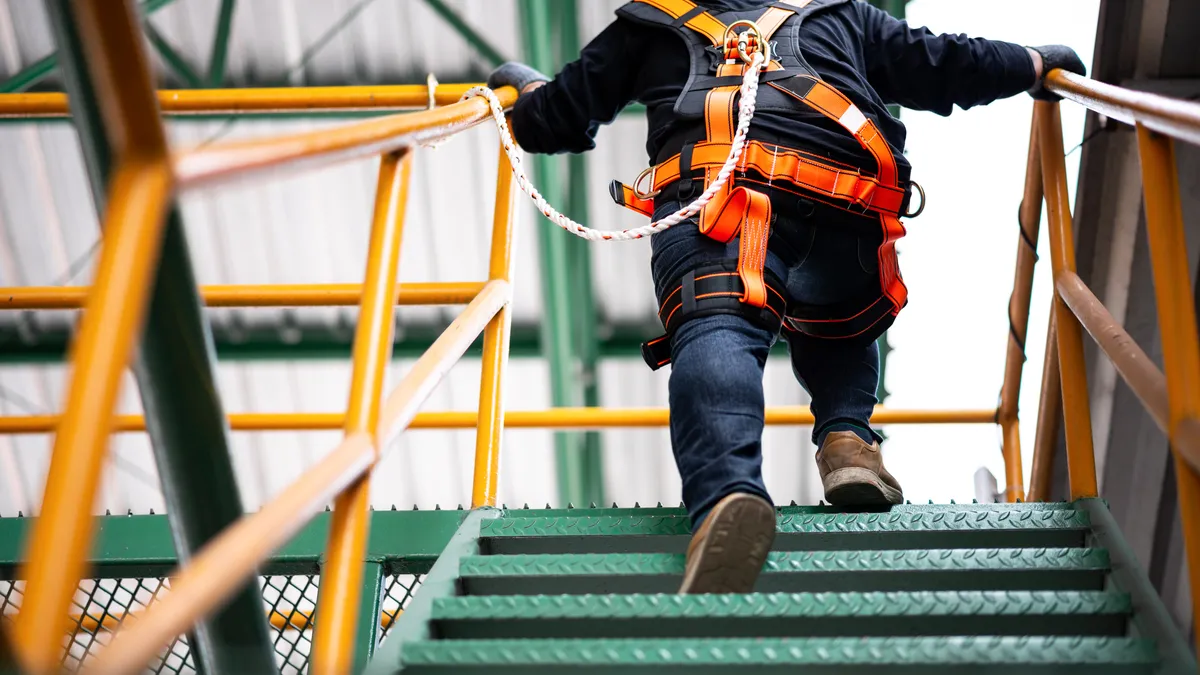Dive Brief:
- The Occupational Safety and Health Administration is ramping up its capacity to inspect infrastructure projects as federal Infrastructure Investment and Jobs Act money flows into the industry, said the agency’s Directorate of Construction Director Scott Ketcham, according to New York City-based law firm Jackson Lewis.
- The agency is increasingly focused on construction, and last year inspected construction workplaces more than any other industry. As federal funds flood into construction over the next seven years thanks to the IIJA, OSHA is concerned about protecting workers in the infrastructure sector in particular.
- To empower smaller contractors and those new to infrastructure projects to build safely, OSHA also recently released a webpage of resources with best practices, sample safety and health programs and training materials.
Dive Insight:
OSHA plans to focus on roads, bridges, airports, rail, ports and power and water systems in the coming years, Ketcham said at an American Bar Association meeting in March. OSHA will be also be promoting safety helmets and suicide prevention, since the suicide rate in construction is much higher than other industries.
Per Ketcham, the agency realizes that the infusion of federal money into construction will result in bids from smaller companies, which often lack the safety resources that larger and more established firms have. To help address this gap, OSHA developed the webpage to help less-resourced companies that will be working on infrastructure projects.
“This construction infrastructure safety and health webpage is intended to be a resource for contractors and other employers working on improving and building our nation’s infrastructure,” the website reads. “This is especially important for the critical work being undertaken through the Infrastructure Investment and Jobs Act.”
The resource focuses on the four most common types of hazards in construction:
- Falls.
- Struck-by object hazards.
- Caught-in or between hazards.
- Electrocution.
It also directs contractors to implement and integrate a written safety and health plan, and to engage workers in implementing it. The webpage also contains links to design safety, suicide prevention and many other resources.
OSHA taking action in construction
Ketcham said that OSHA has been issuing more willful citations for trench violations in particular because, most of the time, protective equipment is on site, just not being used. Last year the agency launched an enhanced enforcement initiative to protect workers from the hazard in response to an “alarming” increase in trench-related fatalities.
In addition, a new OSHA rule that took effect in March authorizes its regional administrators to issue new violation types as “instance-by-instance citations,” meaning the agency can issue multiple citations for specific violations where it would have in the past only issued one. Repeat citations can now be issued for incidents surrounding lockout/tagout, machine guarding, permit-required confined spaces, respiratory protection, falls and trenches.
OSHA may soon get more resources to keep tabs on infrastructure builds. President Joe Biden’s proposed fiscal year 2024 budget would increase the agency’s funding by 17%, to $738.7 million. As part of the increase, OSHA seeks to create 432 new full-time positions, a 21% increase from 2023’s fiscal year plans.













